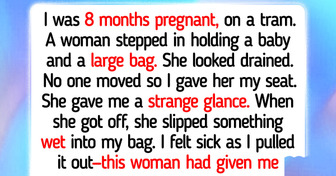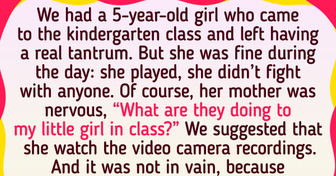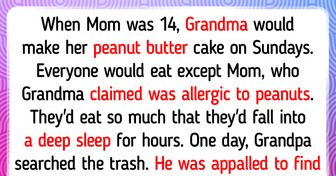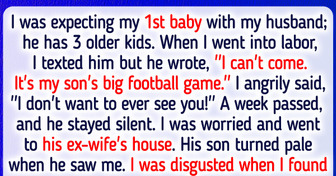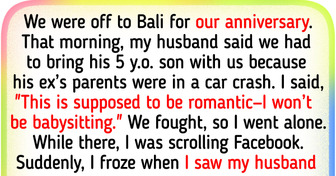14 Strangers Who Did Something That Can’t Be Forgotten

75% of cafe and restaurant visitors go there because they don’t want to spend their free time cooking food and they prefer to eat out with their friends. And about 45% of people will eat out at least twice a week. However, it is better to avoid some meals in order to not do any harm to your health.
Bright Side has reviewed the opinions of waiters, chefs, and other restaurant workers and now we are ready to tell you which meals you should never order, even if you really want to.
In Japanese restaurants, don’t eat tempura (seafood or vegetables that have been battered and deep-fried): only the kitchen workers know when the oil was changed last time.
“Avoid the nightly special side dishes, like salads or slaws, that happen to have bits of sashimi thrown in. Oftentimes, those bits can be leftovers of the fish the restaurant is trying to use up.” Instead, order soups and if you want to try sashimi, come to the restaurant earlier while the ingredients are still fresh.
Don’t order anything off the “Secret Menu” at Starbucks. It doesn’t exist. If you want a snickerdoodle, Nutella, or captain crunch Frappuccino, know the base drink and the modifications, and order that. If you just say the name, it’s up to the barista to come up with what’s in the drink, and it may not be what the last barista you ordered from put in there.
BBQ sandwiches are actually made from chicken that is very old and stale, so they soak it in BBQ sauce until it can be pulled and then they keep it on the heater for a month.
Chicken fingers or nuggets. This is just chicken waste products covered in batter. It’s low-quality meat.
Don’t order anything with uncooked tomatoes. Just don’t. Not even on a burger. Tomatoes are notorious for harboring foodborne bacteria that cause illnesses. Unless it’s an Italian restaurant or something, where they are going through the stuff regularly, or you know for a fact they’ve got a Cordon Bleu or CIA chef.
Swordfish. All fish can have parasitic worms. But swordfish can be riddled with them. Let’s just say it’s pretty unappetizing.
If the cook has added fennel to a fish dish, it’s because the fish is not fresh. Fennel hides the bad smell and fresh fish doesn’t need very many spices.
Happy hour specialty drinks. Unless it’s a discount off of something that’s already offered on the menu, avoid these. They are usually the worst quality ingredients mixed with sugary syrups. The markup is actually pretty high, considering how cheap the products usually are.
If a waiter says, “I strongly recommend the fish stew” for example — it almost certainly means “If we cannot offload it tonight, we will have to throw it away.”
Don’t eat seafood at a restaurant that is far from the coast unless you are sure that they are getting their seafood quickly delivered every day from the docks. The seafood has probably been frozen several times or the expiration date is very soon.
The tasty pieces of baguette or ciabatta are often given to different guests. So, if someone before you didn’t take a piece, they might serve it to you. Ex-waitress, Debra Ginsberg, talks about this in her book Waiting: The True Confessions of a Waitress. The same goes for bar snacks, like peanuts.
If you are at a restaurant that you do not know well, be a little wary of heavily spiced meals — the spices are used to hide meat that, while not poisonous, has nonetheless started to spoil.
Be wary of dishes that can easily have leftovers chucked in — many restaurants will rescue food from diners plates — for example: tomatoes from a salad, an untouched field mushroom etc. If you are having a “wet meal” like a stew, curry, Bolognese, then leftovers can easily be added. If on the other hand, you have half a duck, with piped potatoes, etc., it isn’t as easy to “re-use” returned food. This IS more of an issue than people might like to think, having had friends as cooks, chefs, waiters, and managers, explain that “margins on food are tight — you don’t waste perfectly good food if it can go back out.”
It is better to drink pasteurized juice instead of fresh. Fresh juice can be contaminated and lead to poisoning.
Medium-rare burgers are much more dangerous than medium-rare steaks for one simple reason. While the meat for a burger is cooked, it may be contaminated with bacteria from knives and plates. And microorganisms can’t get inside of a steak, because it hasn’t been cut. All the germs on steaks are cooked by the high temperatures. But when it comes to the minced meat in a burger, medium-rare might not be enough to kill all the germs.
For seafood/shrimp fettuccine dishes, they might use the cheapest frozen seafood, because it’s buried and masked by the sauce.
The daily specials should never be ordered, and the same goes for the chef’s choice, because it’s almost always got components that are either about to expire, have been reheated multiple times, or they’re just trying to get rid of stuff that is rarely ordered and there’s usually a good reason why people don’t order it in the first place.
Artichoke dip or spinach dip is, in the vast majority of restaurants, made by microwaving a frozen puck of dip and tossing a cheap handful of chips onto a plate. Unless you know it’s made from scratch, it’s a waste of money.
Chocolate cake is almost always on the menu because there are some people who will think the restaurant is bad if they don’t have chocolate cake. Everybody knows it, and the better places come up with an actually interesting chocolate dessert for those people. But it’s rarely chocolate cake. It’s an easy dessert to make, it can be made well ahead of service and be stored, it doesn’t use that much chocolate, and it is usually dry and blah.
Grilled chicken. You can do this at home. Also, salmonella is no joke. Chicken is undercooked more often than you might think.
Pizza. Unless of course, the restaurant in question is a pizzeria. Restaurant pizzas are just never that good... Always too watery, cheesy, burned, etc. And they don’t use a pizza oven.
Fish and chips. Like with pizzas, any restaurant that does not specialize in it will always produce poor quality fish and chips. They won’t use a proper fryer, and the portions won’t be big enough.
Tuna sandwich. You don’t know how long it’s been sitting around (if it was made ahead of time) and both mayonnaise and tuna have a short window before they begin to spoil. If you are sure that it has been made fresh with refrigerated ingredients, fine.
Cooking risotto is time-consuming and requires almost constant stirring, it basically requires one chef, standing at a pot, stirring for quite a long period, and most good restaurants with busy high-octane kitchens simply can’t afford to have a chef make just one dish. For this reason, it is very rare to find risotto on a menu and chances are it will not have received the necessary attention and will disappoint.
Never order nachos. They are just cheap corn chips covered in cheap melted cheese and low-quality ground beef. Unless you are with a big group, they will not be finished.
What meal will you never order at a restaurant and why?

